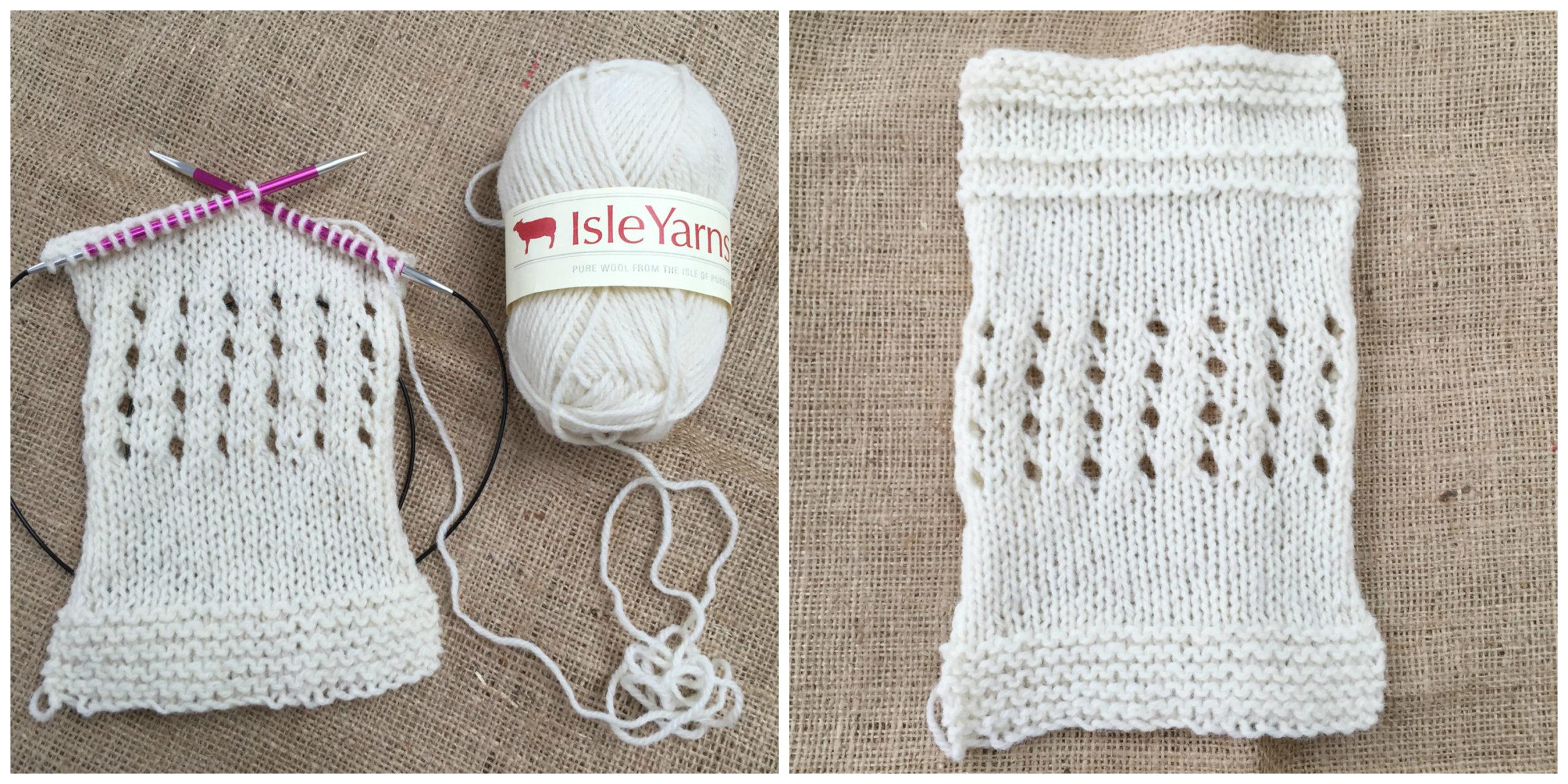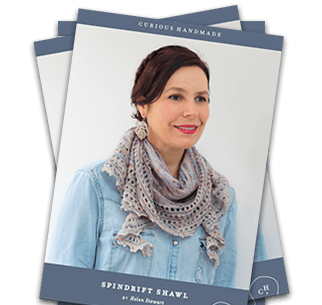If you listened to last week’s podcast, you’ll have heard me talk about a wonderful new yarn I had the chance to try recently. Sue Hole is releasing some wonderful single-breed small-batch yarn that I know is going to appeal hugely to everyone who fell in love with her nephew Benjamin Hole’s Hole & Sons recently. As I mention in my podcast review, Isle Yarns – pure wool from the Isle of Purbeck, is amazing stuff. With all of our talk recently about sustainable fashion and materials, I’m finding myself more and more drawn to small producers like this. I love knowing the story behind the fibre I am holding in my hands. It makes everything more magic and more real.
Isle yarn comes from a carefully bred and tended flock on the Isle of Purbeck. It has a vital rustic appeal: when knitting this yarn you really feel connected to the source. It has a lot of individual character and is not so processed that it could be from anywhere. It manages to be light and robust all at the same time, and it’s very, very springy.
It’s a lovely DK weight but the knitted fabric is quite sturdy and firm. I knit my test swatch using 5mm needles and I like the slightly open fabric. It still has a lot of body and keeps its shape even though the recommended needle size is 4mm. The fibre bloomed beautifully after a good 20 minute soak in Eucalan. It became much softer, with a beautiful body to it. I just laid it out and let it dry without pinning out or stretching it.
This yarn is inspiring too – I’ve had a recent yearning to knit blankets, and my mind instantly started ticking along those lines with design ideas for this yarn.
I think the fact that this yarn is woolen spun contributes to its amazing elasticity, and how it can be so light and airy while staying so strong. For an extremely in-depth and informative article with an explanation and comparison of woolen and worsted spun yarn I recommend this Wovember post by Sue Blacker, founder of The Natural Fibre Co, who spun this yarn for Isle Yarns.
I also have this lovely interview to share with you. Sue Hole gives us a bit more background on her new yarn, and another peek into life on the farm.
*****
Can you tell me more about how Isle Yarn came to be? I know it’s being released under a different label than the Hole & Sons yarn, but I’m curious about the family relationship of the fibre.
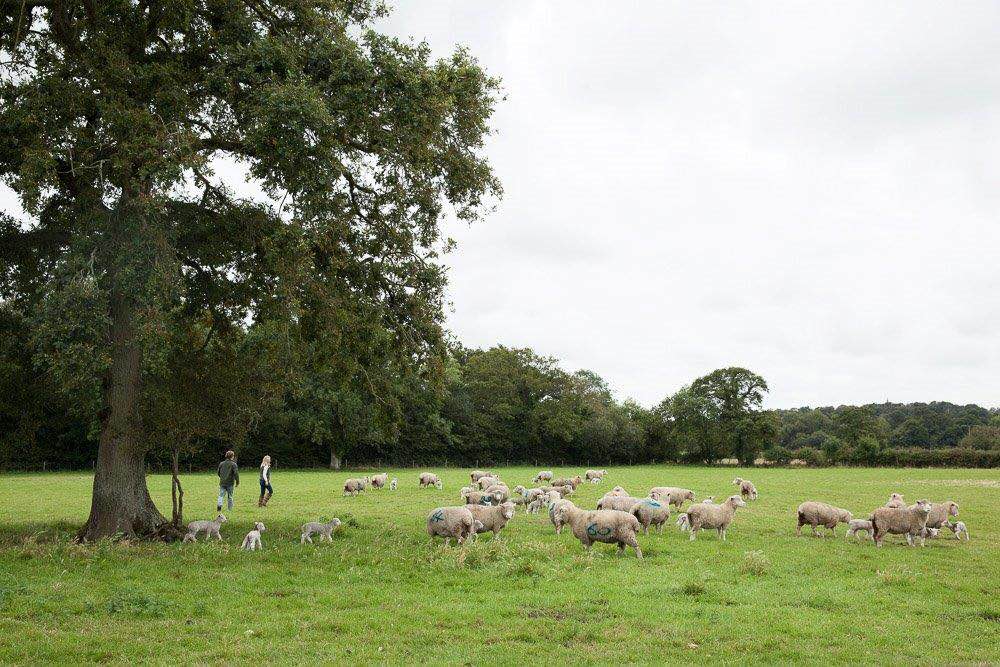
This yarn is from a different flock but still a family flock. Here on the home farm we have a commercial flock of 1400 north country mules and Dorset crosses. We also have a small flock of 30 pedigree Poll Dorsets which we keep to produce our breeding Rams and this is the flock Ben used.
I’ve got a fabric and wool shop in our local town so I had Ben’s wool for sale but it all sold so quickly that I was soon out of stock! So the next time Ben took fleeces to the mill I took fleeces from my son Sam’s Poll Dorset flock to have knitting wool produced so that I could restock my shop as by then Ben had a fair idea that the next batch of home farm wool wouldn’t be around for long again!
I was excited to see that this batch includes some beautiful colours. I’d love to hear more about your inspirations when it came to choosing the shades for this first release!
The colour choices have been the hardest part of the process! I’d love to have all the colours of the rainbow but for each colour the mill needs 4Kilos so if I’ve got 20kilos of wool at the mill at one time I have to choose carefully and so from the sample colours that the mill offered I’ve chosen strong, rustic colours alongside the natural.
I’ve had most of the wool balled in 50g balls but half of the natural had been made into 100g hanks and so far that’s what has been the most popular so the next batch will be in hanks and the colours will be Heather, Moss and Mist grey/blue. Over time I’ll add to the colour range and as there is a 10 week cycle from dropping off the raw wool to collecting the finished wool I’ll aim to choose seasonal colours to coincide.
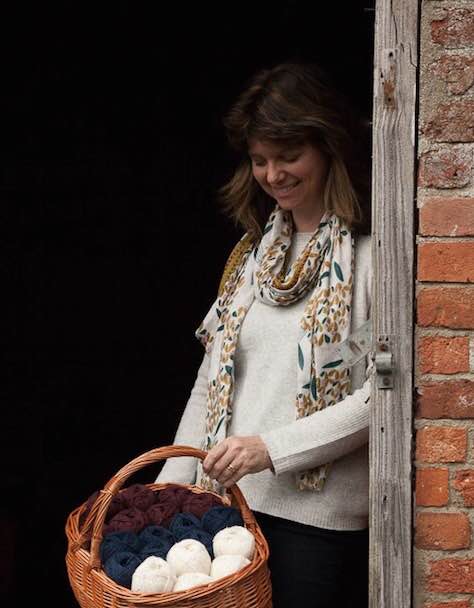
I have a feeling this yarn is going to be a big hit. I know that the very limited quantities are part and parcel of making such special small-batch yarn, but what are your plans for further production and for the future of Isle Yarn?
The quantities are around 20kilos each 10 weeks at the moment. We also have a small flock of Suffolks to breed Rams from and we’ll be shearing that flock at the end of January, so I’m tempted to have that spun for knitting wool too and develop a single breed range. In fact I recently brought ‘The Field Guide to Fleece’ by Deborah Robson and Carol Ekarius which is a very good reference book. Deborah Robson also does a very good free Craftsy lesson called Know your Wool.
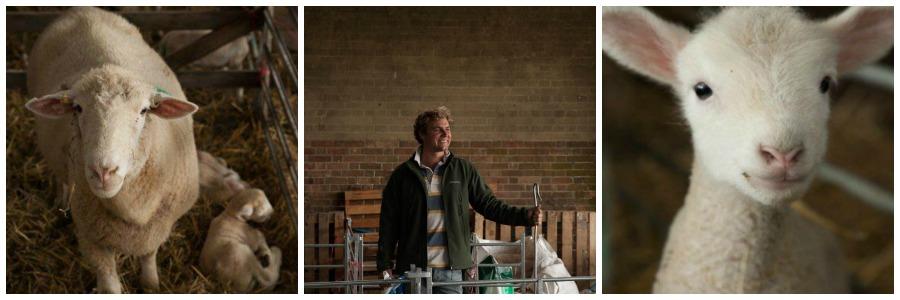
When the first batch of wool came back I sent it out to experts like yourself to ask for reviews and that feed back is proving to be invaluable. Claire Ward of claireinstiches on Instagram has designed a hat pattern especially for the wool which is so exciting! I’ve seen photos of the test knit which has a lovely bold lace pattern running through it and I can’t wait to knit it.
So that’s the story so far!
*****
I want to thank Sue for creating this wonderful yarn, for sending it to me to review, and for taking the time to tell us all about it. You can buy Isle Yarns wool right now in Sue’s online shop. l suggest you snap some up as soon as possible. I think it might be the best-kept secret in wool right now, but it won’t be for long! You can also keep up with all their adventures at the farm on Sue’s beautiful Instagram account.

